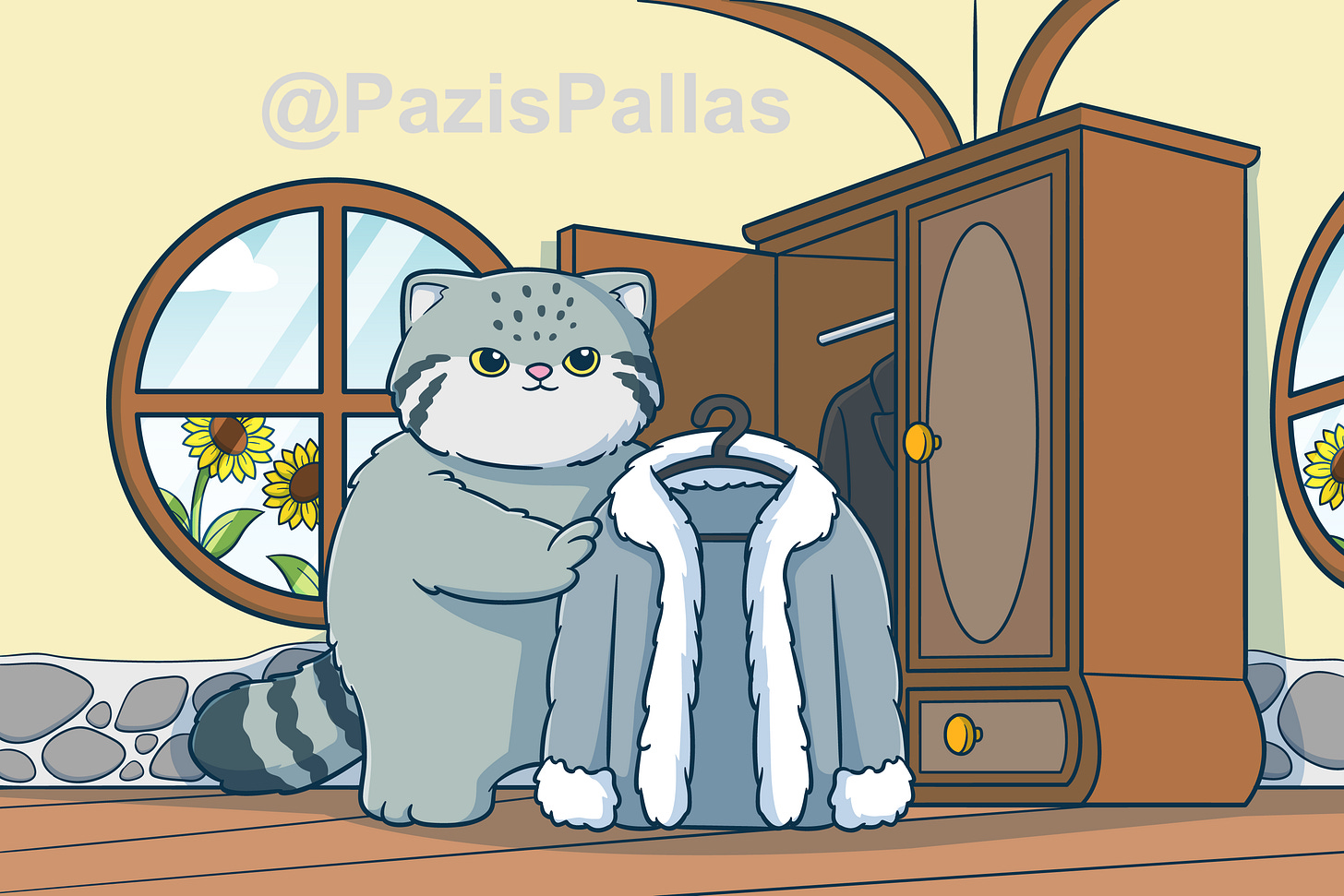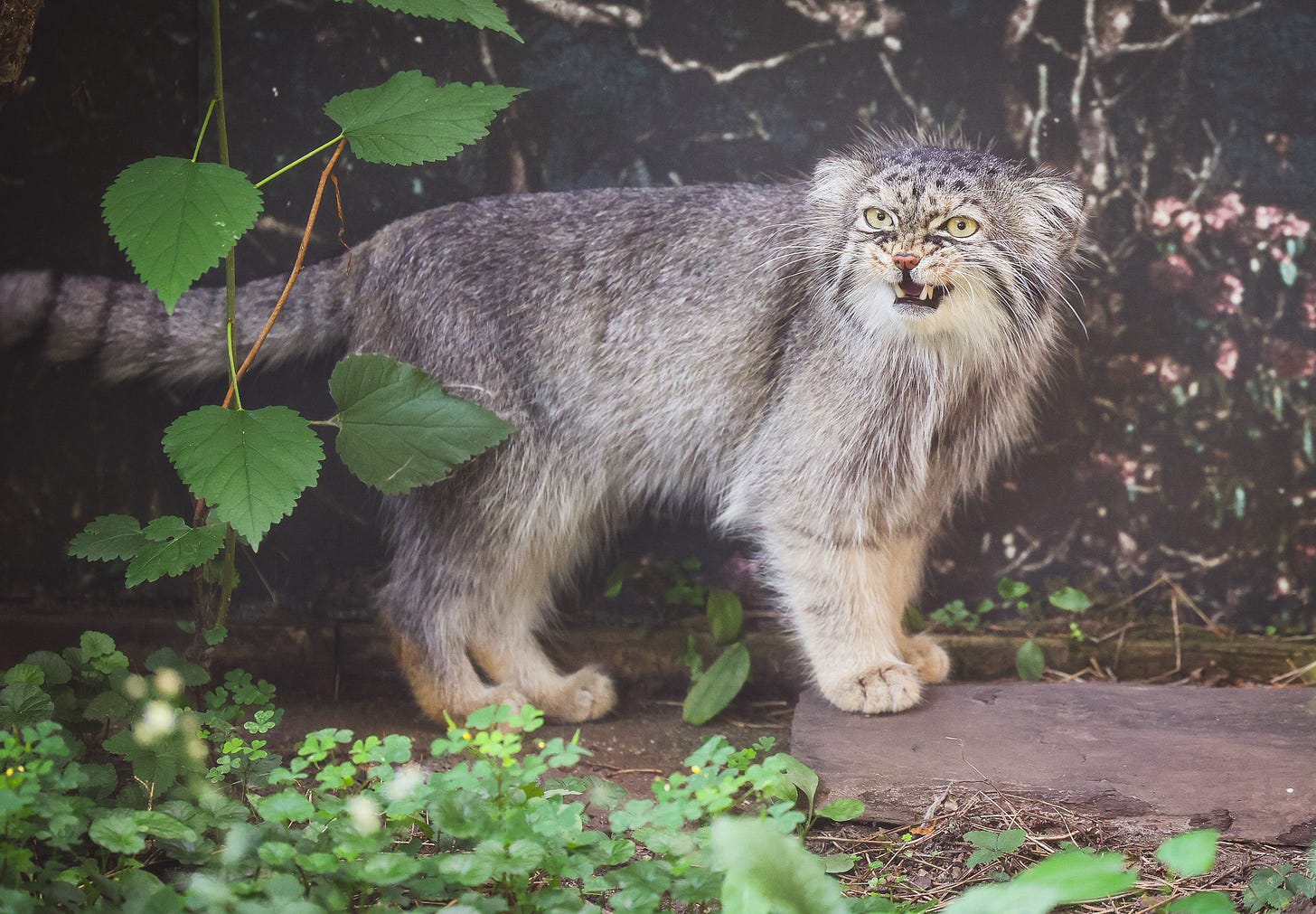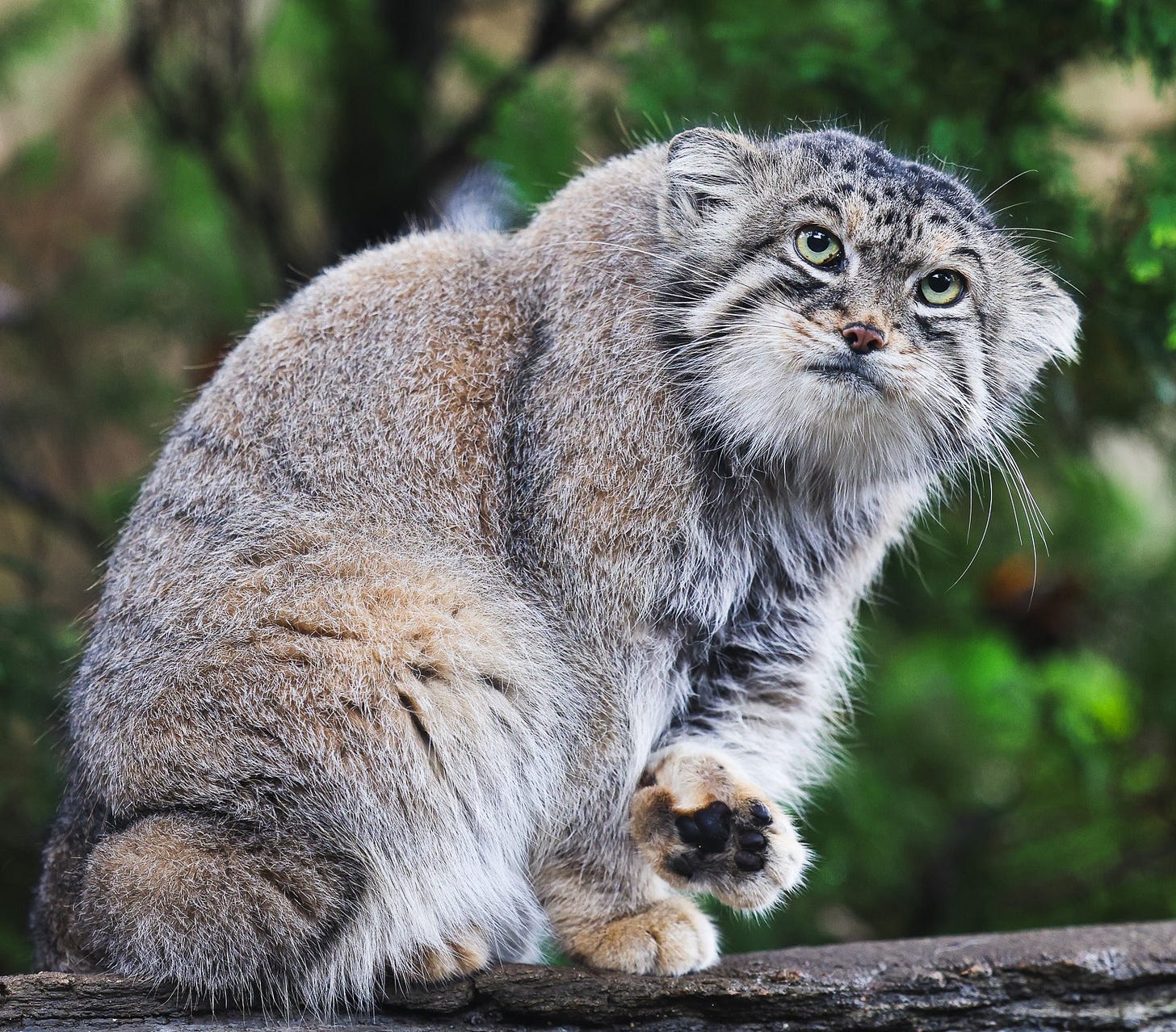Happy Manul Monday — spring is here! As the snow melts and the steppes begin to bloom, it’s not just the landscape that’s shifting. Our favorite floofy felines are undergoing a seasonal makeover of their own.
One of the most striking transformations is the thinning of their famously dense and fluffy coats. Did you know that a manul’s summer coat can be nearly half as dense as its winter one? This seasonal shedding isn’t just cosmetic — it’s essential for survival. On the steppes of Central Asia, where summer temperatures routinely soar above 35°C (95°F), losing some fluff helps manuls stay cool and comfortable in warmer weather.
But it’s not just a change in appearance — it also sparks noticeable changes in behavior. As the weather warms, particularly on mild, cloudy spring days, manuls become noticeably more active, playful, and curious. I've personally noticed this surge in energy and playful mischief myself. And my anecdotal observations line up with scientific findings; studies tracking GPS-collared manuls confirm higher activity levels in spring and summer, likely driven by higher prey availability and more comfortable temperatures.
Speaking of hunting conditions, spring is a transformative period on the steppe. The return of lush grasses and flowering plants kick-starts a chain reaction through the entire ecosystem. Small herbivores — pikas, rodents, and others — emerge from their winter shelters to feed, providing manuls with abundant hunting opportunities. But more prey means more competition, too. Raptors, foxes, wolves, and other predators also take advantage of this springtime bounty, increasing competition and even predation risks for manuls themselves.
This seasonal shift in prey abundance lines up with the annual cycle of manul diets. Around March, wild manuls in the Daurian Steppe of Russia were observed to be their lightest, about 30% lighter than their winter weight. So they’re probably working up quite the appetite this time of year! This seasonal weight fluctuation likely results from scarce prey availability in the winter combined with the high energy demands of the breeding season.
And breeding season, indeed, marks an important time for manuls. Mating occurs from late winter into early spring, with kittens typically arriving two to two-and-a-half months later, usually between March and June. This makes springtime hunting success even more crucial, particularly for nursing mothers who must single-handedly manage both hunting and protection duties. Male manuls offer no parental support, leaving females solely responsible for their kittens’ survival — a challenging balancing act.
And that’s not all. The return of vibrant vegetation to the steppe also attracts livestock herds, increasing competition with native herbivores and, in turn, reducing herbivorous prey that manuls rely on. Additionally, warmer weather often prompts new human activities such as road construction, mining projects, and infrastructure developments which have the potential to encroach upon and fragment manul habitats.
Spring embodies renewal and resilience, for humans and wildlife alike. For manuls, it represents a careful dance between survival and adaptation amid complex ecological shifts. As we enjoy the warmer days ahead, let’s appreciate the hard work these incredible cats are putting in — and look forward to welcoming this year’s new generation of manul kittens, both in zoos and out on the steppe.
In other much sadder news:
Sadly, just as spring arrives with new beginnings, we say goodbye to Lev — one of, if not the most, cherished manuls in the world — who passed away this morning at Nasu Animal Kingdom. Lev’s gentle demeanor, distinctive gait, and sweet personality earned him fans around the globe. Though he is no longer with us, his memory will live on through his offspring and in the hearts of everyone who knew him — whether personally, or through the countless photos and videos shared online. He will be deeply missed.








Some of the saddest news to wake up to this morning. RIP, Lev!